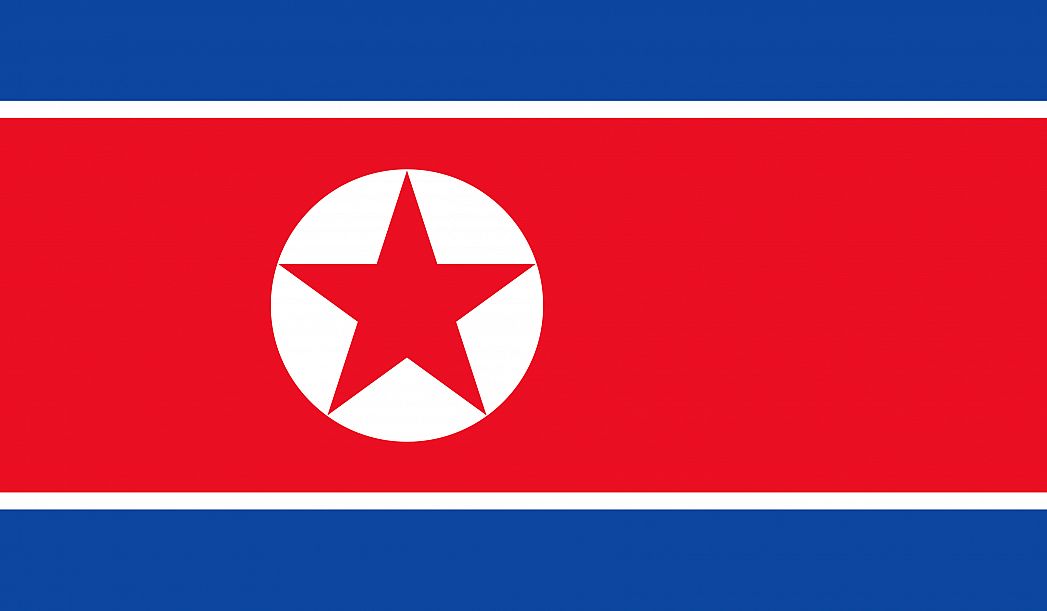The flag of the Democratic People’s Republic of Korea was first introduced in the country on July 10, 1948. However, the nation adopted it officially on September 8, 1948. The flag is known as Ramhongsaek Konghwagukgi. It consists of a wide horizontal red bar at the center bordered by two narrow white stripes on either side of its length. The white lines are bounded by broad blue bands. A white circle enclosing a five-rayed red star sits on the red stripe. The insignia is part of the country’s national emblem.
The red star is the standard sign of socialism and communism which were the guiding ideologies of the state before the introduction of Juche. White, blue, and red are the national colors of North Korea. The outermost blue stripes portray peace, friendship, and sovereignty. White depicts the ethnic purity of the people of North Korea and their culture, while red symbolizes the revolutionary traditions of the nation. Slightly varying interpretations of the flag’s symbolism were given by Kim II-Sung in a text published in an official newspaper locally known as Rodong Sinmum. According to Kim II-Sung, the blue color is a symbol of the spirit of the Korean People as they fight for progress and peace in the world, while red depicts the passion of the Korean patriots who shed their blood to liberate the country from Japanese rule.
The flag of North Korea was designed by an unknown Soviet official. Its design was revealed on May 1, 1948, along with a draft constitution of the Democratic People’s Republic of Korea which was proclaimed four months later. Before the adoption of the current flag, North Korea, which was an ally of the Soviet Union, shared a common flag with South Korea. The flag was known as Taegukgi. The English translation of the term is supreme ultimate flag. The desire to have a new national flag for North Korea was expressed by the Soviet Union through Major General Nikolai Lebedev in 1947, and consequently, a design for a new flag was dictated from Moscow.
The Taegukgi, which was the flag of North Korea until its abolition in 1948, was rectangular shaped with a white background. At the center, the flag bore a red and blue circle formed by interlocking semi-circles. The symbol is known as taegeuk in Korean, hence the name of the flag. The ring was surrounded by four trigrams, each symbolizing one of the four classical elements namely heaven, fire, water, and earth. The southern portion of Korea retained the flag following the establishment of South Korea in 1948.
This page was last modified on May 1st, 2018
More on Graphicmaps

Published on 2019-11-06
What is a Trade Embargo?

Published on 2019-11-04
Which Two Countries Used to Have the Same Flag?

Published on 2019-09-16
What Is the Only Two-Sided State Flag?

Published on 2019-09-16
Which Country Flag Looks Like the Texas Flag?

Published on 2019-08-29
Flags That Resemble the US Flag

Published on 2019-08-20
